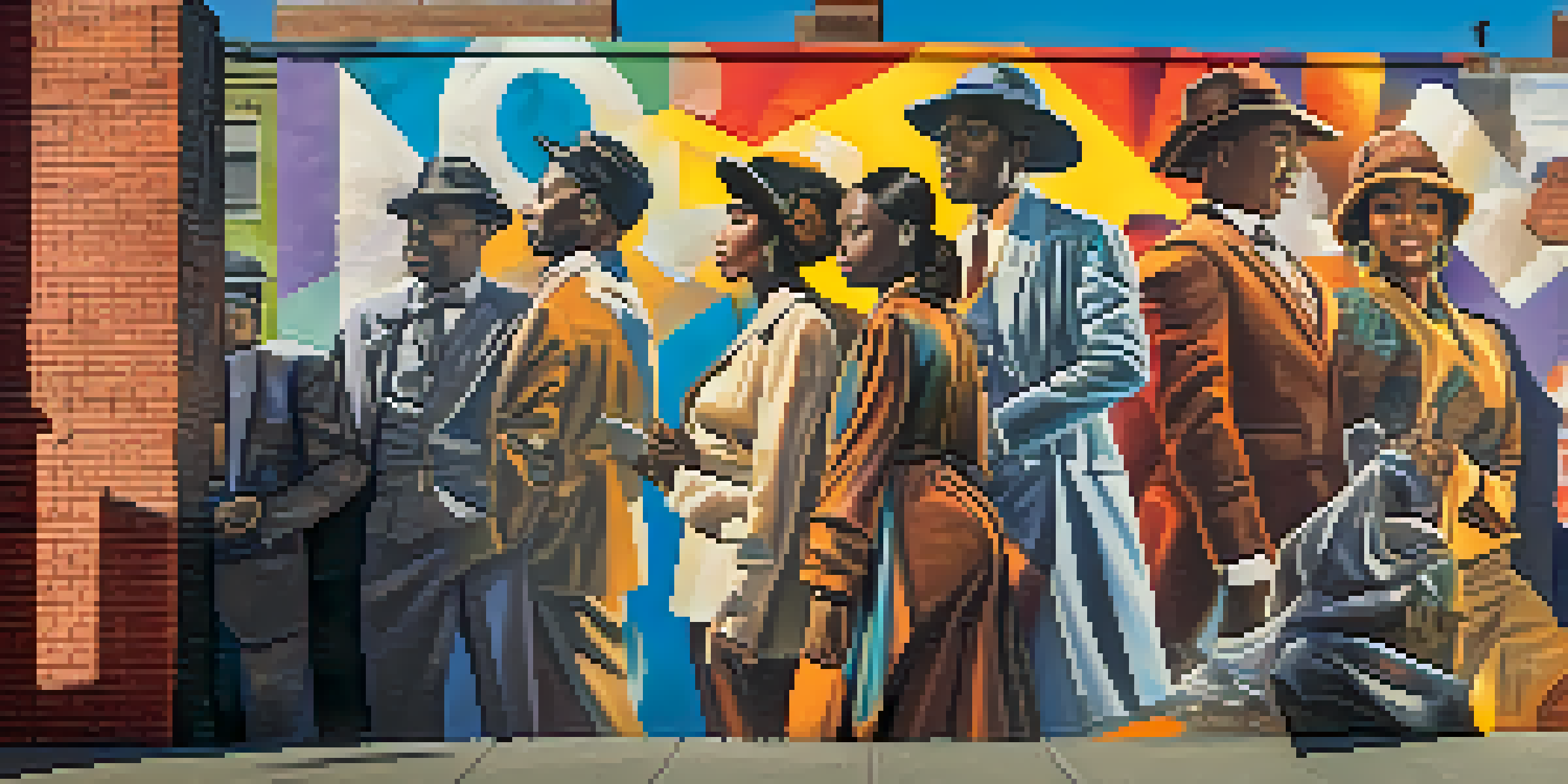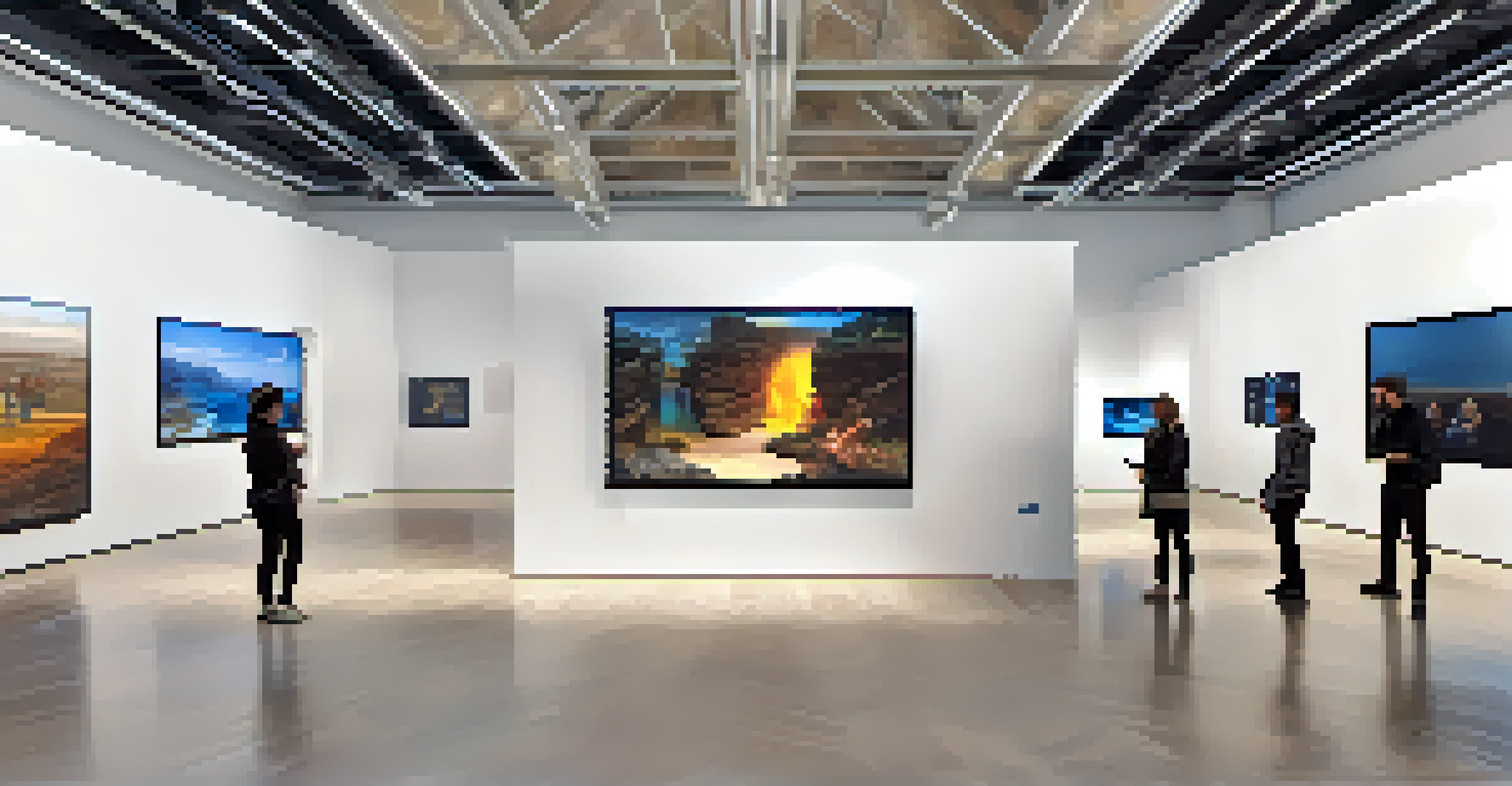Documenting History Through Art: A Visual Narrative Approach

The Importance of Art in Documenting History
Art has always played a crucial role in documenting human experiences and historical events. Through various mediums, artists can capture moments that words alone may fail to convey. Whether it's a painting, sculpture, or photograph, art provides a unique perspective on history, allowing viewers to connect emotionally with the past.
Every artist dips his brush in his own soul, and paints his own nature into his pictures.
For instance, consider Picasso's 'Guernica,' which powerfully depicts the horrors of war and serves as a visual protest against violence. Such artworks not only document events but also evoke feelings and provoke thoughts, making history more relatable and impactful.
By using art as a historical record, we gain insights into the cultural, social, and political contexts of different eras. This visual narrative approach enriches our understanding and appreciation of history, as it invites us to see the world through the eyes of those who lived it.
Art as a Storytelling Medium
Art has an incredible ability to tell stories, often transcending language and cultural barriers. Each piece can encapsulate a narrative that resonates with viewers on a personal level, allowing them to interpret and connect with the story being told.

For example, the famous frescoes of the Sistine Chapel not only showcase Michelangelo’s artistic genius but also narrate biblical stories that have influenced countless generations. Through visual storytelling, art can communicate complex ideas and emotions in a way that is both accessible and engaging.
Art Captures Historical Experiences
Art serves as a powerful medium to document and evoke emotional connections to historical events.
This storytelling aspect of art is particularly important in documenting history, as it helps to humanize events and individuals. By presenting historical narratives through a visual lens, artists can breathe life into the past, making it more vibrant and compelling for contemporary audiences.
The Role of Artists as Historians
Artists often serve as historians, capturing the essence of their times through their work. They observe and interpret the world around them, reflecting societal changes, struggles, and achievements in their art. This unique perspective allows them to document history not just as a series of facts but as a lived experience.
Art is the most beautiful of all lies.
Take, for instance, the Harlem Renaissance artists who expressed the struggles and triumphs of African Americans through their paintings and music. Their art not only documented a significant cultural movement but also contributed to the broader historical narrative of civil rights and social change.
By positioning themselves as both artists and historians, these creatives contribute to a richer understanding of history. Their works become valuable artifacts that preserve memories, sentiments, and perspectives for future generations to explore.
Visual Art and Historical Events
Significant historical events are often immortalized through visual art, creating powerful records that endure over time. Artists have the ability to capture the emotional weight of events, providing a visceral representation that can resonate with viewers long after the actual occurrences.
Consider the iconic photographs from the Civil Rights Movement; these images have become symbols of struggle and perseverance. They tell stories of bravery and injustice, serving as visual documentation that continues to inspire activism and reflection.
Artists as Historical Narrators
Artists act as historians by reflecting societal changes and documenting lived experiences through their creative expressions.
Through such artworks, history is not merely recorded but felt, allowing future generations to grasp the complexities of their predecessors' experiences. This visual documentation creates a lasting legacy that can inform and inspire ongoing conversations about justice and equality.
Exploring Different Art Forms for Historical Documentation
Various art forms can be employed to document history, each offering a unique lens through which to view the past. From traditional paintings and sculptures to modern digital art and installations, each medium carries its own capacity for storytelling and expression.
For example, street art often reflects contemporary societal issues, serving as a form of protest and commentary on current events. Artists like Banksy use public spaces to communicate powerful messages that resonate with the community, effectively documenting the zeitgeist of our times.
By exploring different art forms, we can uncover rich narratives that might otherwise be overlooked. Each medium provides a distinct way to engage with history, ensuring that diverse voices and experiences are represented and remembered.
Art as a Tool for Reflection and Understanding
Art encourages reflection and deeper understanding of historical events, prompting viewers to consider the implications and consequences of the past. Engaging with art allows individuals to process complex emotions and thoughts related to historical narratives.
Take, for instance, the Holocaust memorials scattered around the world. These artistic structures provoke deep reflection on humanity’s darkest moments, inviting visitors to confront uncomfortable truths and remember those lost.
Evolving Art in Historical Contexts
The future of art in documenting history includes innovative technologies that enhance engagement and understanding of past narratives.
Through such reflective experiences, art can foster empathy and promote dialogue about history, encouraging a collective responsibility to learn from the past. This introspection is vital for preventing the repetition of historical mistakes and for promoting a more just future.
The Future of Documenting History Through Art
As we move forward, the role of art in documenting history is evolving with technology and social change. Digital art, virtual reality, and interactive installations are transforming how we engage with historical narratives, offering immersive experiences that can deepen our understanding.
For example, virtual reality installations allow users to experience historical events firsthand, creating a powerful connection to the past. This innovative approach can make history more accessible and engaging, particularly for younger generations who may be more attuned to digital mediums.

As we embrace these new technologies, the potential for art to document and interpret history is limitless. The future holds exciting possibilities for how we create, share, and engage with historical narratives through art, ensuring that these stories continue to be told and remembered.